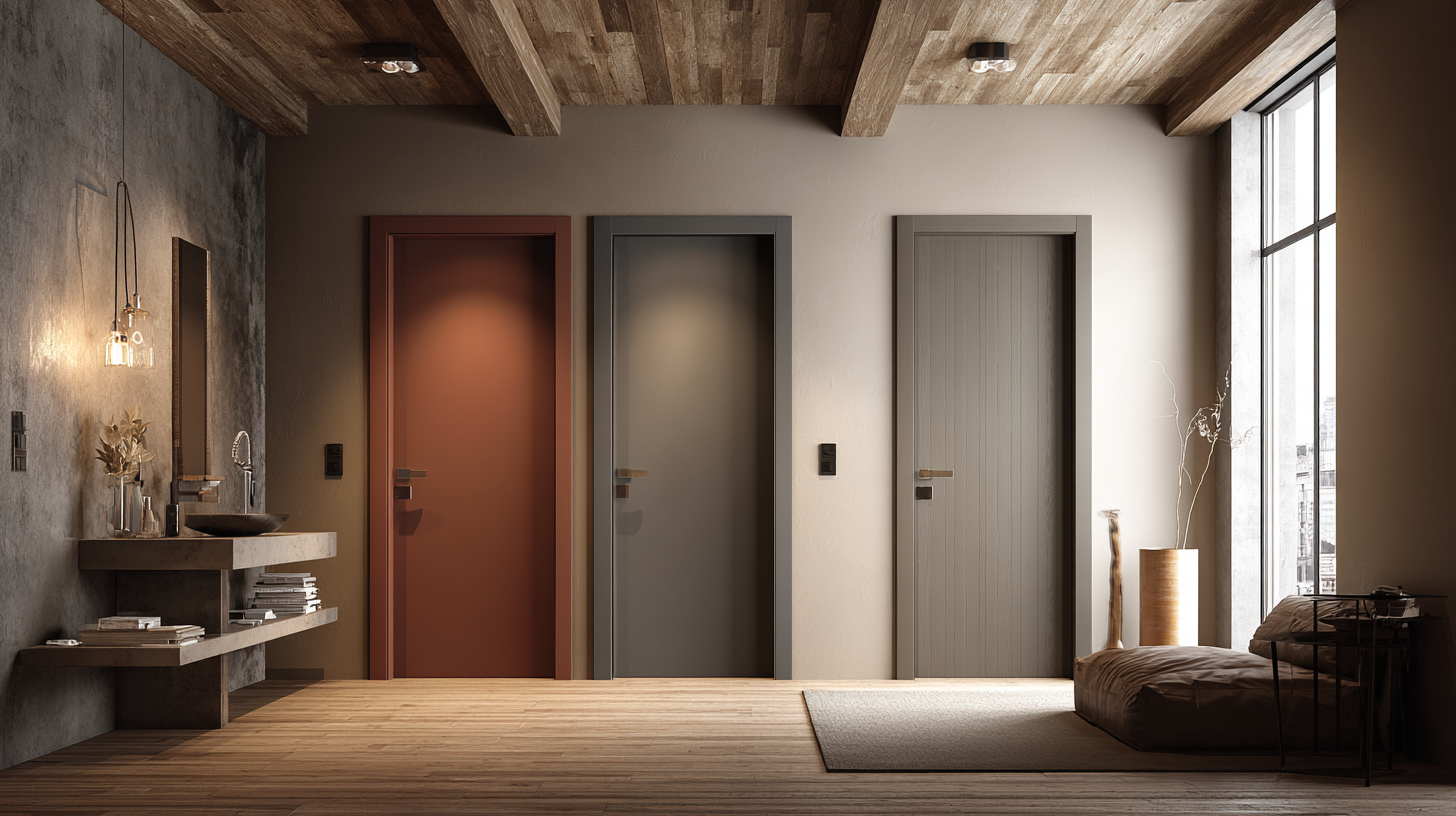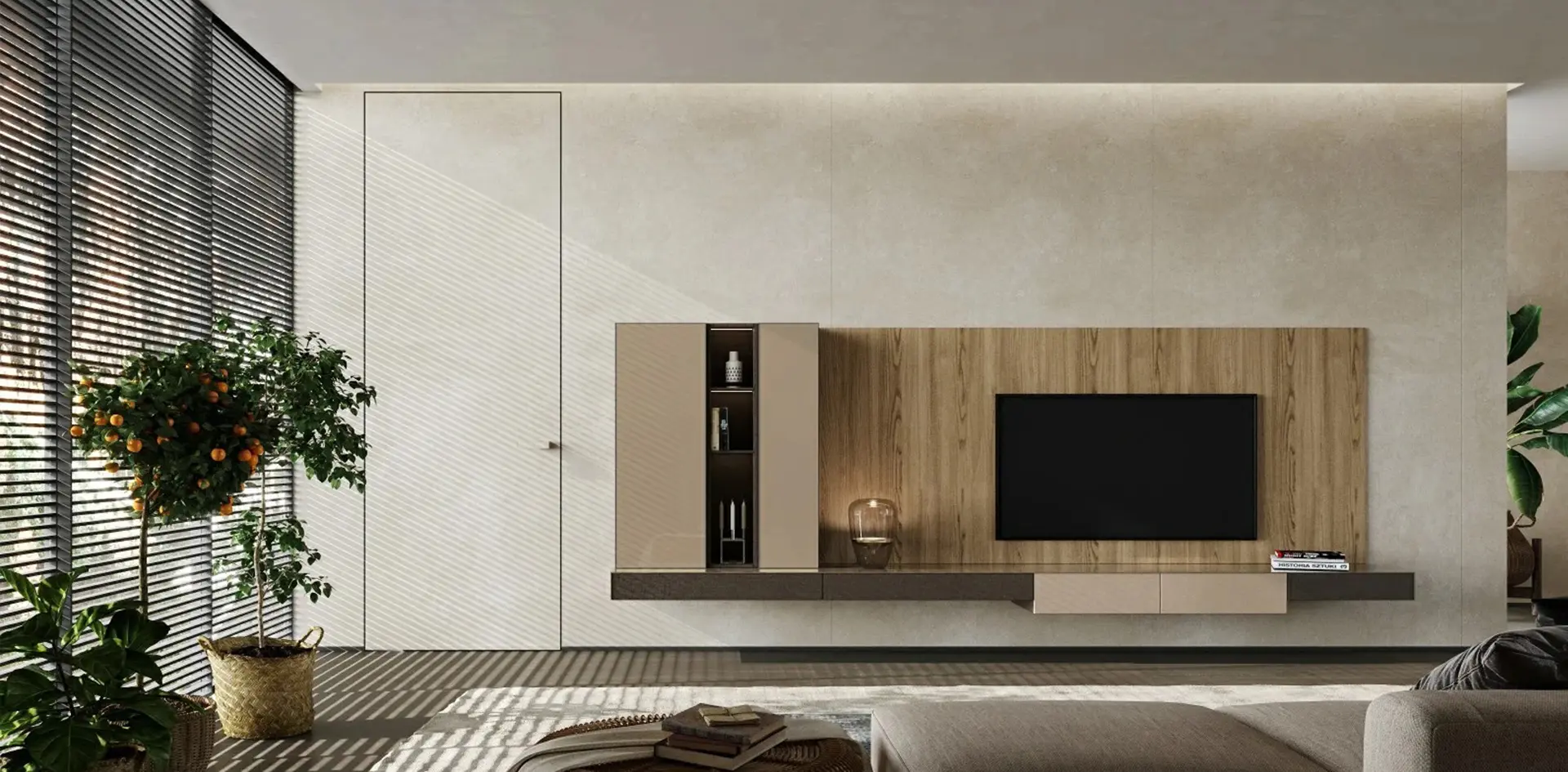
2025 Industry Trends Revealing the Best Door Flush Door Comparisons and Innovations
As we approach 2025, the door manufacturing industry is on the cusp of significant transformation, driven by innovations and changing consumer preferences. The global door market is expected to reach approximately $85 billion by 2025, with a notable surge in demand for energy-efficient and aesthetically pleasing options such as the Door Flush Door. Recent reports highlight that the growing emphasis on minimalistic design and space optimization has positioned flush doors as a preferred choice for both residential and commercial applications.

This blog will delve into the latest industry trends, comparisons of various Door Flush Door technologies, and the innovations shaping the future of door designs. With an increasing focus on sustainability and smart integration, the flush door segment is poised to redefine standards in functionality and style, making it essential for industry professionals and homeowners to stay informed about these exciting developments.
Emerging Door Innovations: Setting New Standards in 2025
In 2025, the door industry is set to undergo significant transformations driven by innovative technologies and sustainable practices. Emerging door innovations are redefining not only aesthetics but also functionality and security. Smart doors equipped with advanced sensors and IoT connectivity are becoming increasingly popular, allowing homeowners to monitor and control their entrances remotely. This integration of technology enhances security while offering convenience, as users can receive real-time alerts and access their homes from anywhere.
Moreover, sustainability is a key focus for manufacturers as they respond to the growing demand for eco-friendly products. Innovations in materials, such as recycled composites and sustainably sourced woods, are paving the way for environmentally responsible door solutions. These modern materials not only reduce environmental impact but also provide better insulation and durability. As we move forward, it’s clear that these emerging trends will set new standards in the door industry, ensuring that style, security, and sustainability go hand in hand for homeowners in 2025 and beyond.

Comparative Analysis of Flush Door Designs: Features and Benefits
Flush doors are emerging as a leading choice in both residential and commercial spaces, thanks to their clean lines and modern aesthetic. According to the "2023 Global Door Market Report", the demand for flush doors is projected to grow by 7% annually, driven by evolving design preferences and enhanced functionality. The seamless design of flush doors allows them to blend effortlessly into walls, offering a minimalist look that appeals to contemporary architects and homeowners alike.

When comparing different flush door designs, a key consideration is the material. High-density fiberboard (HDF) flush doors are gaining popularity due to their resistance to warping and moisture, providing longevity and durability. A study from the "International Journal of Architecture and Design" reveals that doors made from HDF can have a lifecycle three times longer than conventional wooden doors. Additionally, innovations in energy-efficient insulation materials are making flush doors incredibly effective at regulating indoor temperatures, contributing to energy savings of up to 20% annually. As sustainability becomes a central focus in the construction industry, the incorporation of eco-friendly materials in flush door designs is set to set new benchmarks in performance and environmental responsibility.
Exploring Chinese Manufacturing Excellence in the Global Door Market
The global door market is witnessing a significant transformation, with Chinese manufacturing leading the charge in innovation and quality. As renowned for its production capabilities, China is setting benchmarks in the door industry, particularly in flush door designs that combine aesthetics with functionality. The ongoing emphasis on advanced materials and sustainability in manufacturing practices has allowed Chinese companies to excel and offer competitive products on a global scale.
When exploring the advantages of choosing Chinese-manufactured
flush doors, consider the following tips:
First, focus on the certification and quality standards of the product.
Ensuring that the doors meet international benchmarks can provide peace of
mind regarding durability and safety.
Second, take advantage of the customization options often
available, allowing you to tailor door designs to meet specific aesthetic
and functional needs. Lastly, keep an eye on technological innovations
emerging from Chinese manufacturers, as they are increasingly integrating
smart features into their products.
As the industry gears up for an exciting future, these factors will undoubtedly play a pivotal role in shaping consumer choices and setting trends. With Chinese manufacturing excellence at the forefront, the next generation of flush doors is poised to redefine the intersection of style and performance in homes and commercial spaces alike.
Sustainability Trends in Door Production: Eco-Friendly Solutions
As we look ahead to 2025, the trend of sustainability in door production is becoming increasingly vital. The integration of eco-friendly solutions not only meets consumer demands but also aligns with broader sustainability principles. Recent studies indicate a significant shift towards sustainable building materials, highlighting the innovative production technologies that enhance performance while minimizing environmental impact. This is particularly relevant in the door industry, where materials such as recycled composites and sustainably sourced wood are gaining traction.
Research shows that the circular economy framework plays a crucial role in this transition, emphasizing the importance of designing doors that can be easily reused or recycled at the end of their life cycle. By adopting these principles, manufacturers can reduce waste and create long-lasting products that contribute to environmental sustainability. Furthermore, the rising trend in sustainable packaging demonstrates that eco-conscious consumers are also considering the materials surrounding their products, pushing companies to innovate not just in the products themselves but also in how they are delivered and presented. This holistic approach to sustainability is shaping the future of the door manufacturing sector, heralding an era where eco-friendly practices are the norm rather than the exception.
2025 Industry Trends: Sustainability in Door Production
Consumer Insights: What Buyers Look for in Flush Doors Today
In 2025, flush doors have evolved to not just fulfill a functional role, but to become a vital part of home design aesthetics. Today's consumers, particularly those from emergent markets, are increasingly influenced by their surroundings and the desire for personalized living spaces. Insights from women shoppers in Tier III cities highlight a significant shift in purchasing power and preference. These consumers are looking for flush doors that not only offer quality but also reflect their individual style and improve their home environment, such as enhancing light and ventilation.
Additionally, the current trends indicate that buyers prioritize innovative features within flush doors, such as sustainability and advanced materials that ensure durability. As consumers become more discerning about their choices, they seek products that align with their values, such as eco-friendliness and smart technology. This transformation in consumer behavior signifies that brands must adapt their offerings to meet the evolving expectations of buyers, ensuring that every flush door becomes a statement piece that complements their lifestyle.
As the market continues to evolve, it’s essential for manufacturers and retailers to remain ahead of trends, understanding what influences consumer decisions in this changing landscape. The focus on unique designs and functional benefits means that flush doors are no longer just an afterthought but a critical element in home renovation and construction.











